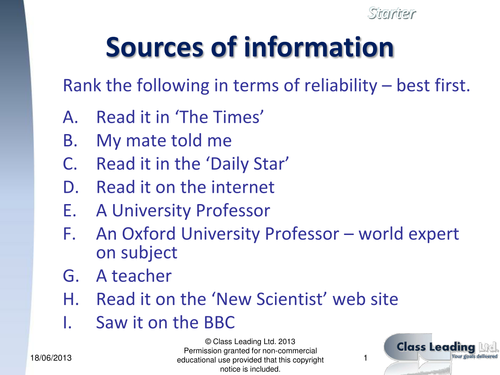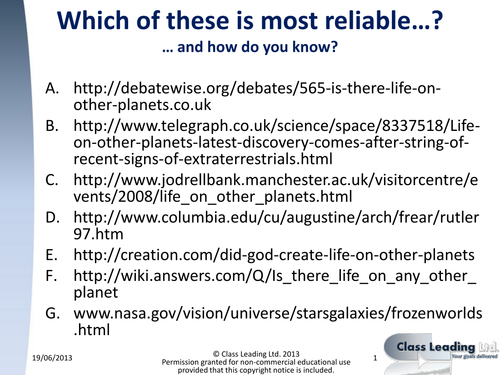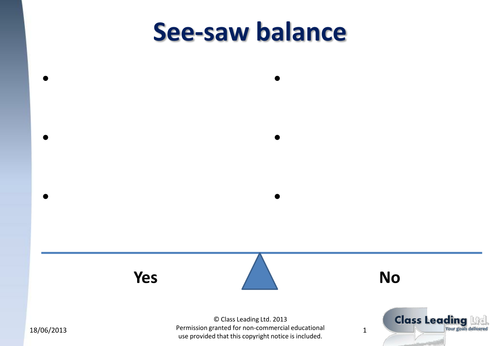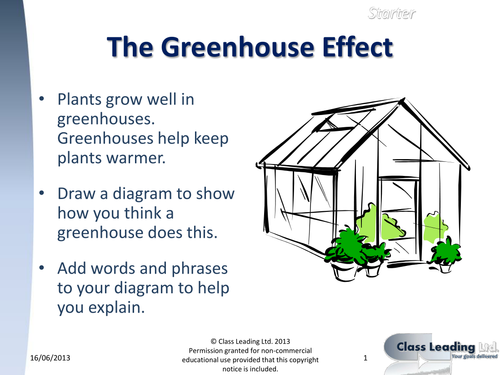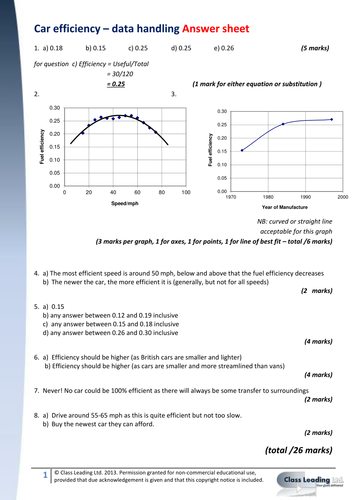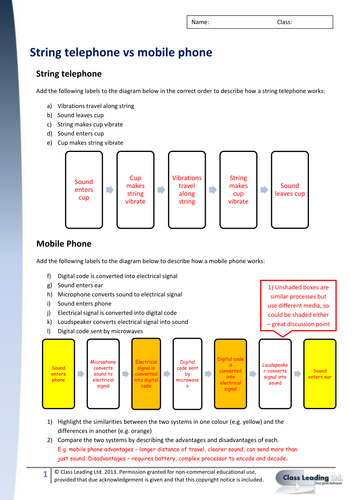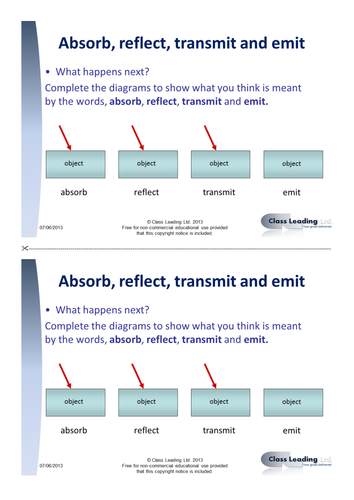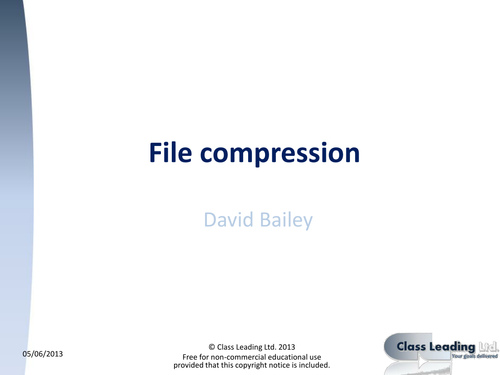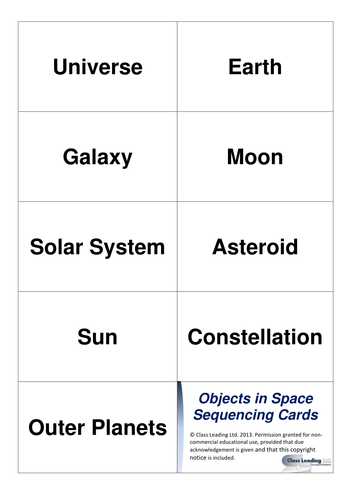314Uploads
262k+Views
194k+Downloads
Physics

Identify the particle rolling slideshow PP - Instant Engagement / Retrieval
These are a sequence of PowerPoint slideshows designed to support the retrieval of the composition of particles in the standard model. They can be used as an instant engagement task (rolling on screen as students enter the room for immediate engagement with learning). They can also be used as a retrieval quiz. The slideshows are essentially the same task (with rearranged slides) but get progressively more demanding as the changeover of slide gets faster (as the numbers on the titles of the slideshows in brackets increase). Start the students with (1) and then as they get faster, use the more demanding versions.
This resource goes well with the particle flashcards also available on TES Resources at https://www.tes.com/teaching-resource/-6341199

'Where do I stand?' cards - perceptions activity
This activity allows students to indicate their perceptions on a particular question. The question might be a debate e.g. ‘Should we build more nuclear power stations?’, ‘Is cloning a good idea?’ or ‘Should social media be banned?’.
To use the cards, print and laminate the cards. Lay the cards out along a line and ask the students to stand near the card that represents how strongly they agree (not on the card due to risk of slipping). Then ask them to justify their reasoning.
This works really well when carried out before and after a debate.
Designed for use in science, these also have use in other subjects such as Citizenship, PSHE and RE. Inspired by an activity at the NCT.

Sources of information - starter
This resource is an was originally designed for instant engagement, to be on display on entry to the room. The students are given a period of time (say 3 minutes) to rank order the sources of information. This works well in groups with mini-whiteboards. The teacher then asks students to indicate whether each source was in the top 3, middle 3 or bottom 3 – e.g. by show of hands. This supports a discussion on reliability and disagreement between groups provides chance for cognitive conflict and students explaining their reasoning. It was originally designed as a starter to LSS activity 3.1

Evaluating websites from URLs
This resource is a short powerpoint show and a pdf of the first slide. The idea is that learners read the URLs for a series of websites and decide whether they are trustworthy. They could put them into one of say three categories (e.g. High, Medium. Low).This is great for stimulating debate amongst learners, especially if the task is completed as a group. It is very effective when learners are asked to explain their reasoning. The powerpoint show can then be used to develop understanding further.

Data Handling - Key words
This is a small collection of key words related to data handling. They are designed as a display tool. Remember if laminating to use matt laminates for wall displays to avoid reflection problems.
Key words: range, mean, true value, average, real difference.

Weighing up arguments - See saw writing frame
This resource is a collection of 6 slightly different see-saw balances that can be used with learners to help them develop the skills to weigh up an argument. The idea is that students will list reasons on both side of an argument (e.g. Should we have Nuclear Power?). They then use this to help make a decision. The scoring column on some sheets allows learners to score each argument out of a maximum of say 3. Add the scores on each side to see which has the stronger argument. This also includes phrases to support a more detailed conclusion. This was inspired by 21st Century Science.

Greenhouse Effect & Solar System - data handling
This activity follows on well from the Greenhouse effect starter. Based on interpreting data about planets in the solar system, it leads learners to the conclusion that Venus is hotter than it should be due to CO2. There are two levels of activity, the more demanding one explores the role of photons/light/radiation in heating planets. This activity was originally designed for 21st Century Science unit P2.
Please note that this is a non-editable resource. A premium editable version is also available at: https://www.tes.com/teaching-resource/resource-11858634
Key words: greenhouse effect, atmosphere, CO2, carbon dioxide, global warming

Greenhouse Effect starter - Draw what you think
A simple but effective activity to establish prior knowledge at the start looking at the topic of the Greenhouse effect. Learners can be encouraged to use scientific vocabulary and ideas. It is a great way of finding out how they think a greenhouse works before looking at the atmospheric effect. Works well when working in small groups (e.g. 3) on a large piece of paper. Really helps them to think when they are asked to justify their reasoning.
Right-click then 'save as&' the web link to download the PowerPoint show.

Car efficiency - Data handling
Keywords: Efficiency, calculation, graph, skill, explain, justify, MAT.
This activity is designed to stretch the most able learners with some questions and tasks related to calculating efficiency. There are some demanding questions involving handling data and using graphs to make predictions. This was designed as a home learning task to consolidate learning about efficiency.
It would also make a suitable starter for AS/A level.
An answer sheet is included with suggested marks for each question.

Food chains and energy transfer - questions
This is a worksheet based activity that includes some higher order thinking to explore the ideas around energy transfer in simple food chains. Two versions are included, one with legacy GCSE grades, the other without. (please note that grade indications are only approximate). Why not try getting learners to choose a selection of questions to answer (e.g. do Q1-4 or Q3-8) An answer sheet is included.
This resource was originally designed for OCR 21st Century Science unit B3.
A premium editable version of this is available at: https://www.tes.com/teaching-resource/-11858631
Keywords: energy, transfer, food chain, efficiency

Evidence for climate change - data handling
This is a short standalone activity linked with the topic of climate change, global warming and icecap melting. It is intended to develop higher-order thinking skills and understanding of data. It aims to provide an opportunity for cognitive conflict and discussion.
There are two ways this task can be attempted:
Allow the students to work through the first two set of tasks sequentially. Hand out only the sheet with a triangle in the top right of the page. When this is completed, hand out only the sheet with the square. Finally, when this is completed give out the third and final sheet with questions 4 onwards.
Alternatively…
One half of class is given the first sheet, marked with a triangle. The other half is given the ones marked with a square. Pupils work on their own sheets independently. After a few minutes, pupils who have completed different sheets pair up. They compare their sheets and answer the questions on the third sheet together.
When this was tested, pupils responded well to the tricky questions.

Active modelling - String vs mobile phone
Keywords: digital, analogue, encode, decode.
Notes: This activity helps learners compare how a simple string telephone works against a more complex digital system. Get the students to make string telephones using paper/plastic cups and lengths of string before attempting to complete the sheet. This helps explain an abstract idea by building up from a very hands on simple (more concrete) example. It really engages learners of all abilities. There is an activity sheet and a guidance sheet with answers. This was originally designed for OCR 21st Century Science unit P2

Draw the meaning - absorb, transmit & reflect
This activity helps learners ‘draw the meaning’ of key words to do with light/radiation. It tests what learners think these words mean and builds an understanding of the concept behind each word. Two slightly different versions - one adds the word ‘emit’. Great as an instant engagement starter (on a sheet on the desk and shown on screen on entry to the room) to a lesson where these ideas will be explored. Also helpful for GCSE students recapping ideas before applying them in a context such as the greenhouse effect. Right click the web links to download the powerpoint shows.

P2 Images, compression and file size
Keywords: Image, quality, file size, download time, compression
A series of activities that use a familiar image to get across the relationship between file size and image quality. It also supports learners to consider the effect of compression on image quality. It was intended to use the powerpoint show as a starter and follow it up with the file size worksheet, then the compression worksheet. Originally designed for unit P2 of 21st Century Science. Right click the web link to download the powerpoint show.

Objects in Space sort cards
Key words: Universe, Galaxy, Solar system, Sun, planet, asteroid, constellation.
This is a sort card activity and powerpoint show to support the task. It gets students thinking about objects in space. The powerpoint show comes in two forms, with or without the word constellation. The addition of the constellation card adds a real opportunity for cognitive conflict and helps iron out a preconception of what a constellation is.
Right click the web links to download the powerpoint shows.

Measuring with oscilloscopes
Keywords: p.d., voltage, potential difference, frequency, time period, time base, measurement
This resource has a powerpoint show with worked examples of how to calculate p.d., frequency etc. using an oscilloscope.
It is supported by graded intended learning outcomes and an independent learning task, which set as home learning has resulted in students being extremely creative.
Right click the web links to download the powerpoint shows.

Models of the atom - Comparison
This activity aims to clarify thinking around the models of the atom that scientists use, and why we have more than one model.
A slideshow that compares different models of the atom, the timeline of discovery and summarises the uses of each model.
Key words: Model, Plum-pudding, Rutherford, Dalton, nuclear.

Engaging 'hats' model of electric circuits
Keywords: circuit, model, current, charge, electron, hats
This is an engaging model for students to participate in modelling electric circuits. It is aimed at KS3, but has been used successfully with KS4 and KS5. It helps students build a coherent model to explain circuits, although alternative models help explain energy transfers and potential difference (voltage) better.
Please note that this was originally published a number of years ago as part of the North Yorkshire Success for All project.
A premium PowerPoint slideshow that provides a visual model of the motion of charges in the circuit is also available at https://www.tes.com/teaching-resource/resource-12613884



